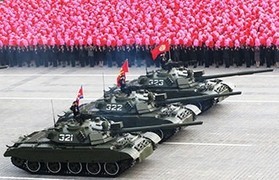 English (US) »
English (US) »
 한국어
한국어
| Learn Korean - First words | ||
|---|---|---|
| Hi! | 안녕! annyeong! | |
| Hello! | 안녕하세요! annyeonghaseyo! | |
| How are you? | 잘 지내세요? jal jinaeseyo? | |
| Good bye! | 안녕히 가세요! annyeonghi gaseyo! | |
| See you soon! | 곧 만나요! god mannayo! | |
Facts about the Korean language
The Korean language, known as Hangul in South Korea and Chosŏn’gŭl in North Korea, holds a significant place in the cultural and social fabric of the Korean Peninsula. It is the official language of both South and North Korea, serving as a vital communication tool for over 75 million people. Its unique alphabet and structure distinguish it from other languages.
King Sejong the Great introduced Hangul in the 15th century to promote literacy among the common people. Before its invention, the Korean language was written using Chinese characters, which were difficult for the general populace to learn. Hangul’s creation marked a revolutionary shift, making reading and writing accessible to all Koreans.
Hangul is celebrated for its scientific design. The alphabet consists of 24 letters: 14 consonants and 10 vowels. These characters are grouped into syllabic blocks to form words. This arrangement reflects the shape of the speaker’s mouth when making the sounds, an innovative feature that enhances its ease of learning.
Interestingly, the Korean language has seven levels of speech formalities. These levels range from highly formal to casual, depending on the social status and relationship between the speakers. This aspect of Korean emphasizes the culture’s values of respect and hierarchy, woven into the very fabric of the language.
Korean vocabulary has absorbed numerous words from other languages, especially Chinese and, in more recent times, English. This linguistic borrowing reflects the historical and cultural exchanges between Korea and other nations. It also illustrates the dynamic nature of the Korean language as it evolves to incorporate new terms.
The influence of the Korean language extends beyond the peninsula, thanks in part to the global popularity of Korean culture. K-pop, Korean dramas, and cuisine have sparked interest in learning Korean worldwide. This cultural export has led to an increased number of people studying the language, eager to engage more deeply with Korean culture.
Korean for beginners is one of over 50 free language packs that you can get from us.
‘50LANGUAGES’ is the effective way to learn Korean online and for free.
Our teaching materials for the Korean course are available both online and as iPhone and Android apps.
With this course you can learn Korean independently - without a teacher and without a language school!
The lessons are clearly structured and will help you achieve your goals.
Learn Korean fast with 100 Korean language lessons organized by topic.








